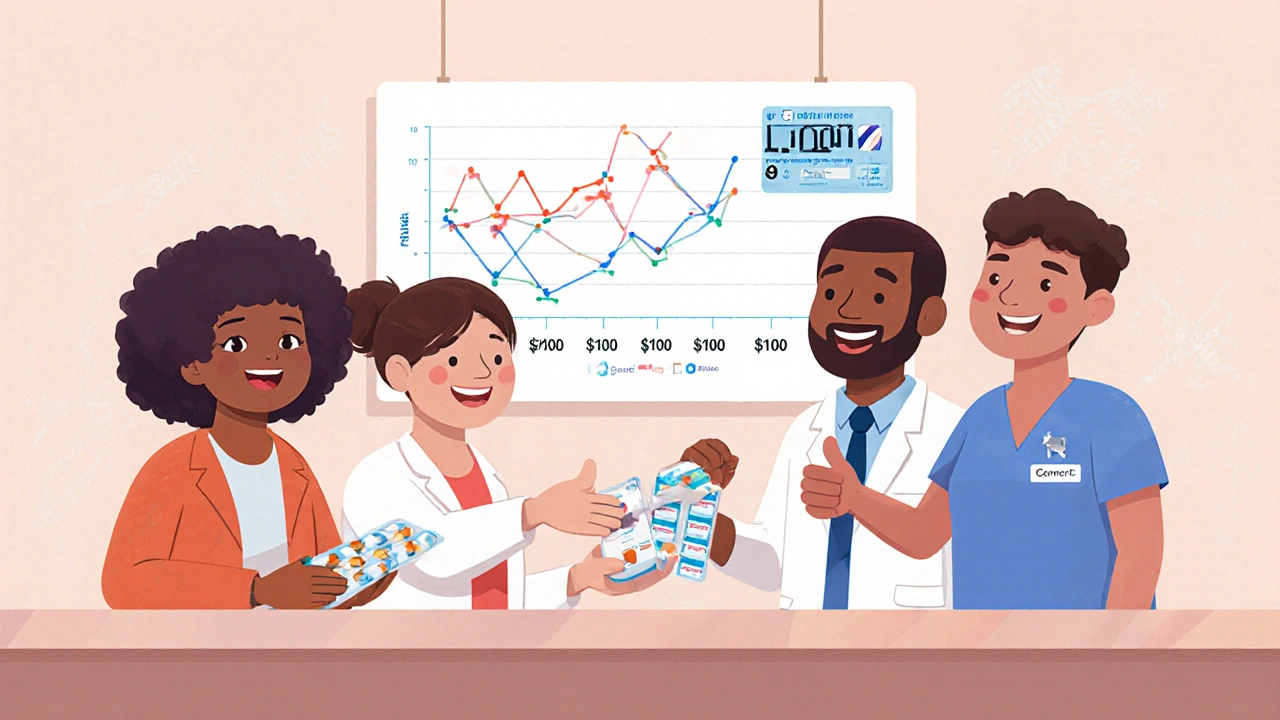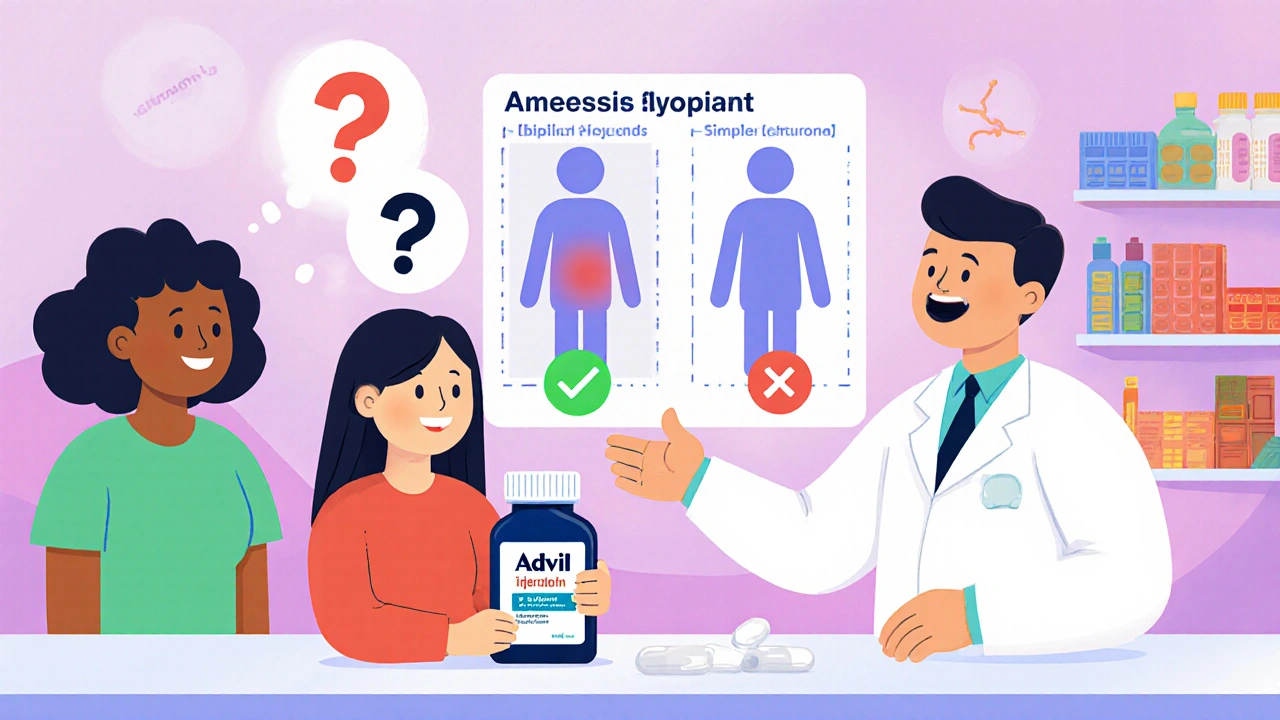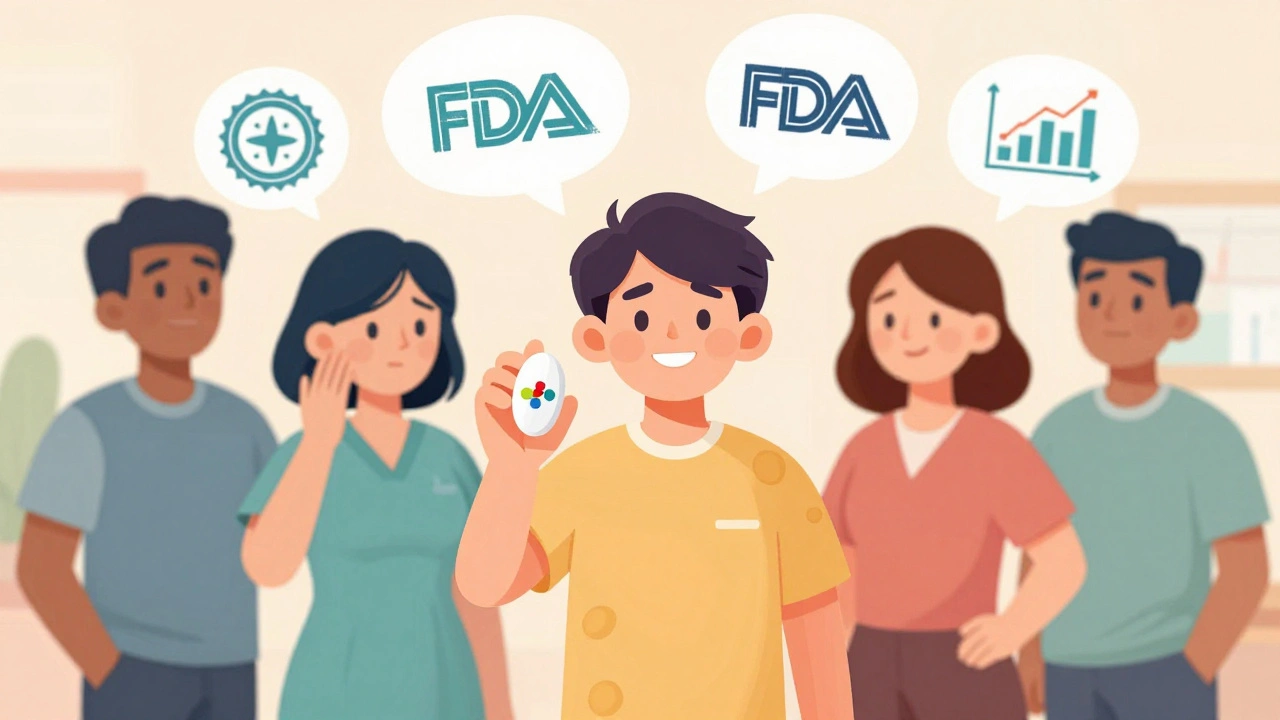When you walk into a pharmacy and get a cheaper version of your prescription, you’re seeing the result of one of the most effective cost-saving tools in global healthcare: generic drugs. But behind that simple swap lies a complex web of policies, regulations, and market forces that vary wildly from country to country. Some nations slash prices by over 90%. Others struggle with shortages. A few have built systems so effective they save billions annually. This isn’t just about saving money-it’s about whether people can actually get the medicine they need.
How Generics Work: The Basic Idea
Generic drugs are chemically identical to brand-name versions. They contain the same active ingredient, work the same way in the body, and meet the same safety standards. The only differences? The name, the packaging, and the price-often 80% to 90% lower. But getting them to market isn’t automatic. It takes a government policy to make it happen. The U.S. laid the groundwork in 1984 with the Hatch-Waxman Act, which created a fast-track approval path for generics. It allowed companies to skip expensive clinical trials by proving their product was bioequivalent-meaning it released the same amount of drug into the bloodstream at the same rate as the original. That model spread globally. By 2025, over 100 countries had adopted some version of it. The results are staggering. In the U.S., generics make up 90.1% of all prescriptions filled, yet account for only 23% of total drug spending. Medicare saved $142 billion in 2024 from generic use alone-$2,643 per beneficiary. In the EU, generics represent 65% of prescriptions but just 22% of costs. That’s the power of smart policy.The U.S. Model: High Volume, Low Prices, Big Savings
The U.S. is the world’s leader in generic use. But it’s not because Americans are more trusting of generics-it’s because the system is engineered for efficiency. The FDA approves generics through the Abbreviated New Drug Application (ANDA) process. As of December 2024, there were 11,342 approved generic products on the Orange Book. Competitive Generic Therapy (CGT) designations, introduced in 2017, speed things up for drugs with little or no competition. Zenara Pharma’s Sertraline Hydrochloride capsules, approved in August 2025 under CGT, hit the market in just 10 months-half the usual time. What’s unique about the U.S. is how it combines high generic penetration with strong negotiation power. Public-sector drug prices are 18% lower than in other wealthy countries, even though brand-name drugs cost more here. Why? Because Medicare, Medicaid, and VA systems negotiate aggressively. And when multiple generic manufacturers enter the market, prices crash. One study showed that when four or more generics compete, prices drop by over 85%. But there’s a catch. Pharmacy Benefit Managers (PBMs)-the middlemen between insurers and pharmacies-sometimes set higher copays for generics than for brand-name drugs. Patients on Reddit’s r/AskDocs reported 63% frustration with this practice. It’s a policy flaw: the system saves money, but not always for the patient.China’s Volume-Based Procurement: The 90% Price Cut Experiment
China took a different approach. Instead of relying on market competition, it went straight to bulk buying. In 2018, China launched Volume-Based Procurement (VBP), where the government holds centralized tenders for essential medicines. Hospitals commit to buying only the lowest-bidding generic. The results? Average price drops of 54.7%. In some cases, like the blood thinner rivaroxaban, prices fell by 93%. By 2025, VBP covered over 400 drugs. The National Healthcare Security Administration announced a Phase 4 expansion in September 2025, adding 150 more drugs with winning bids set at 65% below current prices. But there’s a dark side. A 2025 survey by the China Generic Pharmaceutical Association found 23% of manufacturers were selling these drugs at a loss. That’s not sustainable. In 2024, Amlodipine besylate-a common blood pressure drug-vanished from shelves in 12 provinces for six to eight weeks because no one could make it profitably. Patients appreciated the lower prices, but 37% reported shortages. The system works for scale, but it risks breaking the supply chain. If no one can make money, no one will make the drug.
South Korea’s 1+3 Rule: Less Competition, Better Quality?
South Korea didn’t want a race to the bottom. It wanted control. In 2020, it introduced the “1+3 Bioequivalence Policy”: only the first generic and three follow-ups could be approved using the same bioequivalence data. After that, new entrants had to run their own studies. It cut redundant generics by 41% between 2020 and 2024. Then came the Differential Generic Pricing System in 2021. Generics were split into three tiers:- High quality + low price: 53.55% of brand price
- One criterion met: 45.52%
- Neither: 38.69%
The European Paradox: One Market, 27 Different Prices
The EU has a centralized approval system through the European Medicines Agency (EMA). Once a generic is approved, it can be sold across all 27 member states. But here’s the problem: each country sets its own price. The same generic pill might cost €0.10 in Germany and €0.40 in Italy. In extreme cases, price differences exceed 300%, according to the OECD Health at a Glance 2025 report. Why? Because countries use external reference pricing-comparing prices to other nations. The Netherlands, for example, picks reference countries like Norway and the UK to justify even lower prices. It’s legal. It’s strategic. And it’s chaotic. Germany leads in generic use at 88.3% by volume, thanks to mandatory substitution laws. Italy? Only 67.4%. The difference isn’t income or health needs-it’s policy design. The European Commission is trying to fix this with a new Pharmaceutical Package, expected in late 2025. It proposes harmonizing pricing rules and giving extra incentives to the first generic to enter the market. If passed, it could cut approval times by 12-15%.
India: The World’s Pharmacy, But With Quality Concerns
India produces 20% of the world’s generic medicines by volume. It’s the go-to source for low-cost drugs for Africa, Latin America, and even parts of Europe and the U.S. Its secret? Compulsory licensing under Section 84 of the Patents Act 1970. If a drug is too expensive or not available, the government can authorize local manufacturers to copy it-even before the patent expires. This makes India the largest supplier of generic HIV, TB, and hepatitis C drugs globally. But it also draws lawsuits from big pharma. And quality? It’s mixed. The FDA issued 17% more warning letters to Indian generic makers between 2022 and 2024, mostly over data integrity issues-faked test results, incomplete records. Dr. Anant Jani of the Access to Medicine Foundation warned in The Lancet that aggressive price cuts are pushing manufacturers to cut corners. Indian doctors report inconsistent bioavailability in some generics, especially for narrow therapeutic index drugs like warfarin and phenytoin. One physician told MedIndia Network: “I trust generics for antibiotics. For epilepsy meds? I still write the brand name.”The Global Challenge: Saving Money Without Breaking the System
The world is facing a wave of patent expirations. Between 2025 and 2030, $217-236 billion in branded drug sales will lose exclusivity. That’s a massive opportunity for generics. But the same policies that save money today could break supply chains tomorrow. The WHO warns that excessively low prices threaten manufacturing quality and resilience. In 2024, the FDA issued 2,183 import alerts for quality violations-up from 1,247 in 2020. Most came from India and China. McKinsey predicts the number of global generic manufacturers will drop from 3,500 to 2,200 by 2030. Only companies with integrated R&D, manufacturing, and distribution will survive. Successful systems share three traits:- Clear bioequivalence standards-bioavailability within 80-125% of the brand.
- Education for doctors and pharmacists-countries with strong training see 22-35% higher generic acceptance.
- Reasonable profit margins-manufacturers need at least 15-20% gross margin to invest in quality and scale.




Bailey Sheppard
It’s wild how the same drug can cost ten times more in one country than another. I’ve been on a generic blood pressure med for years, and I never realized how much policy shaped that price. The U.S. system saves money overall, but the PBM thing? That’s just broken. Patients shouldn’t have to fight their own insurance to get the cheaper option.
November 19, 2025 AT 02:27
Kristi Joy
I work in a community pharmacy and see this daily. Older patients will ask why their $4 generic has a $35 copay while the brand is $20. They don’t understand PBMs. We explain it as best we can, but the system is designed to confuse. Education matters more than we admit.
November 20, 2025 AT 04:04
Hal Nicholas
China’s 93% price drop sounds great until you realize people can’t find the medicine. This isn’t saving lives-it’s creating a black market for pills. And don’t even get me started on India. FDA warnings? That’s not a glitch, that’s the business model.
November 20, 2025 AT 15:03
Louie Amour
Let’s be real-generic drugs are a Band-Aid on a bullet wound. Big Pharma’s profits are the real issue, not the price of a pill. The fact that we’re even debating whether a generic should cost $0.10 or $0.40 proves how broken the entire system is. You don’t fix healthcare by making pills cheaper-you fix it by removing profit from medicine entirely.
November 21, 2025 AT 03:51
Kristina Williams
Did you know the FDA is in cahoots with big pharma? They delay generic approvals just long enough to let brand-name companies extend patents through sneaky loopholes. And PBMs? They’re not middlemen-they’re cartel enforcers. The government knows this. They just don’t care because they’re paid off.
November 22, 2025 AT 13:59
Sarah Frey
The structural imbalance between volume-based procurement and sustainable manufacturing is a classic case of short-term efficiency undermining long-term resilience. The WHO’s warning about quality erosion is not speculative-it is empirically validated across multiple jurisdictions. Without minimum viable margins, supply chain fragmentation becomes inevitable.
November 23, 2025 AT 14:07
Girish Pai
India makes 20% of the world’s generics because we don’t play by your rules. You patent everything, then cry when we make it affordable. Section 84 isn’t theft-it’s justice. Your FDA warnings? Mostly from labs that can’t compete with our scale. We’re not cutting corners-we’re cutting the monopoly.
November 24, 2025 AT 03:41
Shilpi Tiwari
The bioequivalence variance in narrow therapeutic index drugs like phenytoin is a documented clinical concern. Studies from AIIMS and PGIMER show inter-patient variability up to 28% in some Indian generics. This isn’t about nationalism-it’s about pharmacokinetic integrity. We need harmonized testing protocols, not just price wars.
November 25, 2025 AT 15:56
Christine Eslinger
It’s not about making generics the cheapest. It’s about making them the right choice. When doctors trust them, patients take them. When manufacturers can survive, quality stays high. The 15-20% margin isn’t greed-it’s sustainability. We treat medicine like a commodity, but it’s not. It’s the difference between life and death. Let’s stop pretending otherwise.
November 26, 2025 AT 11:00
Denny Sucipto
I’ve seen people skip doses because they couldn’t afford the copay-even on generics. That’s not a policy win. That’s a moral failure. We got the science right, but we forgot the humans. No one should have to choose between rent and their heart med. Fix the system, not just the price tag.
November 27, 2025 AT 07:57
Holly Powell
South Korea’s 1+3 rule is the only rational approach. Unchecked competition leads to race-to-the-bottom manufacturing. Quality degradation isn’t a side effect-it’s the intended outcome of neoliberal pricing models. The FDA’s 2,183 import alerts? That’s the direct result of deregulated generics. We need to kill the free market here, not worship it.
November 28, 2025 AT 21:35
Emanuel Jalba
THEY’RE LYING TO YOU!!! 🚨 The FDA is owned by Pfizer!!! Generics are full of talcum powder and rat poison!!! I know a guy who knew a guy who got a seizure from a generic blood thinner!!! They want you sick so they can sell you MORE drugs!!! 💀💊
November 30, 2025 AT 21:05
Heidi R
China’s system is a disaster waiting to happen. No one makes a profit? Then no one makes the drug. Simple.
December 2, 2025 AT 18:51
Brenda Kuter
Wait… so you’re telling me the government is actually *trying* to fix this? 😱 That’s a new one. Last time I checked, they were busy selling our data to pharma and letting PBMs rip us off. This feels like a trap. Someone’s gonna profit off this ‘solution’ and we’ll be left holding the bag. Again.
December 2, 2025 AT 22:12